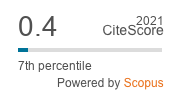Impact of seed dressing insecticides on natural enemies of Bt cotton ecosystem
DOI:
https://doi.org/10.33307/entomon.v48i3.953Abstract
Investigations were carried out on the effect of seed dressing chemicals on the beneficial predators in the Bt cotton ecosystem during 2021-22. All seed dressing insecticides were found safer to the natural enemies as the population of Chrysoperla and ladybird beetle were found comparable to population of untreated control treatment up to 37 days of seed treatment. Similarly, the spider population was also not affected up to 17 days of seed treatment. Thereafter, the population of natural enemies was found higher with the higher prey (sucking pests) populations in the untreated check compared to treatments of seed dressing chemicals and in later treatments, there was no significant difference. The maximum population of spiders (0.52/plant), Chrysoperla (0.42/plant) and ladybird beetle (0.42/plant) was observed in the untreated control. Yield data indicated that the treatment with imidacloprid 70 WG @ 3 g kg-1 obtained highest seed cotton yield (21.69 q ha-1) and it was found superior over the other seed treatments.


